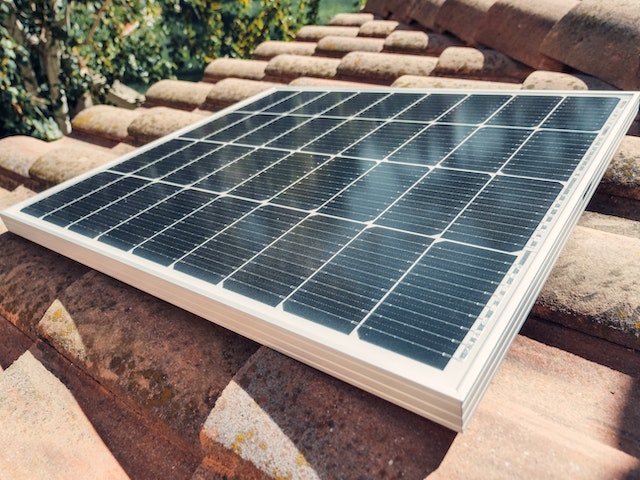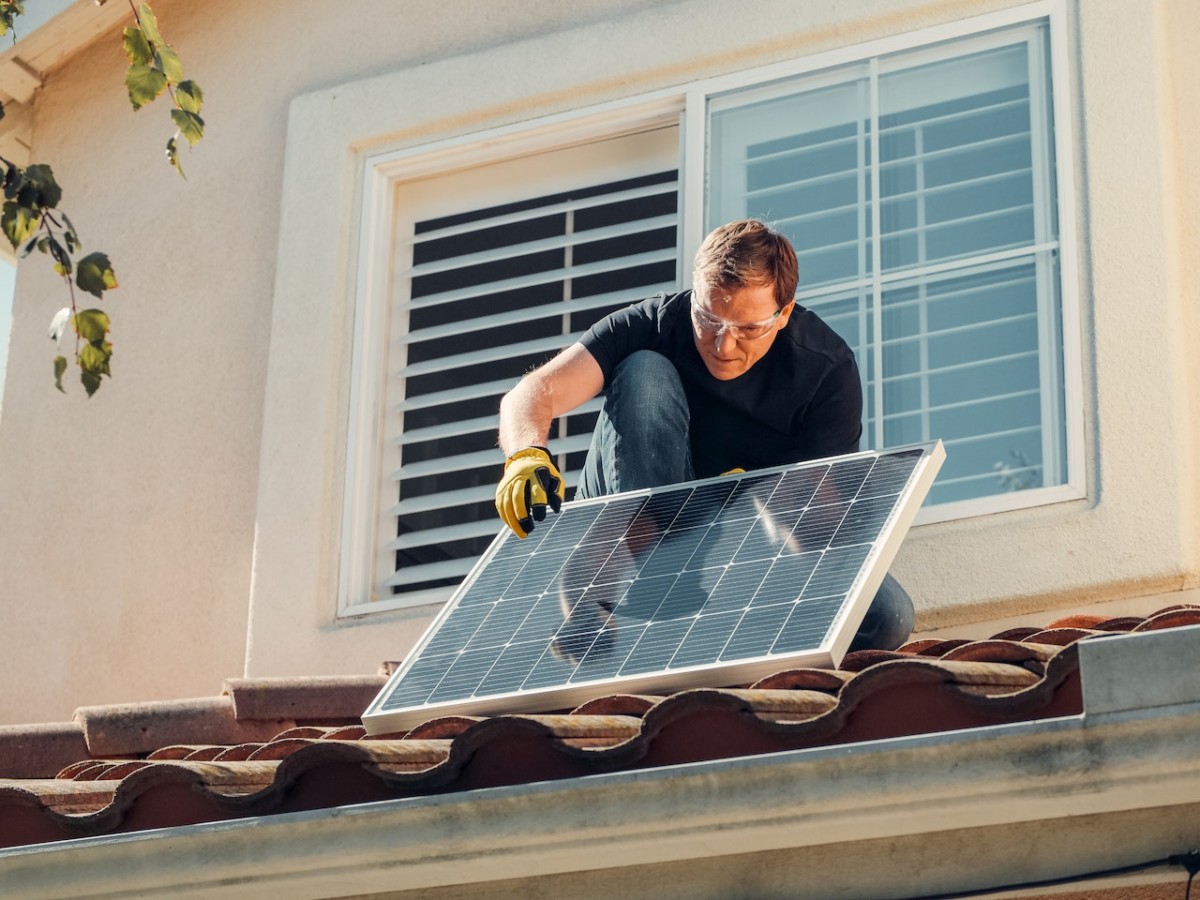What’s The Best Direction For Solar Panels
The best direction for solar panels is south-facing with no shading. This is because the sun is in the southern sky during the day in the Northern Hemisphere, but in the Southern Hemisphere, north-facing panels will get more sun.
Solar panels should be installed at a tilt so that they are perpendicular to the sun’s rays. The angle of tilt should be equal to the latitude of the location. The best angle for solar panels in the United States is between 30 and 45 degrees.
The electricity bill is a reality for many of us, with the cost of energy increasing year after year. For those looking to reduce their bills and contribute to a greener future, solar power may be the answer.
But how do you make sure that your solar panels are set up in the best possible position?
In this article, we’ll discuss why choosing the right direction for your solar panels is important and provide some tips on how to determine what orientation will be most efficient. With a few simple steps, you can start taking advantage of renewable energy sources and save money on your electricity bills.
South-facing panels
When it comes to solar panels, many people are unaware of the different directions that they can be installed and what their specific benefits are. South-facing solar panels are one of the most popular types and they offer plenty of advantages to homeowners looking to switch to renewable energy sources.
South-facing solar panels allow for maximum sun exposure throughout the day as the sun rises in the east and sets in the west.
This way, homeowners can take full advantage of all available sunlight during peak hours without having any shadows cast over their home’s roof or yard. Additionally, south-facing panels tend to produce most energy than in other directions because they receive direct sunlight from sunrise until sunset with no obstructions.
Overall, south-facing solar panels provide excellent energy efficiency for homes across America due to their consistent exposure to daylight hours and lack of obstacles blocking sunlight.
West-facing panels
Solar energy is an increasingly popular choice for homeowners looking to reduce their electric bills and become more environmentally friendly.
One of the key decisions when designing a solar energy system is the solar panel direction that the panels should face. West-facing panels are an excellent option, offering several unique benefits.
West-facing panels have one major advantage over other orientations: they can capture and store energy throughout the day, rather than just in the morning or afternoon as east- and south-facing installations do.
This means that west-facing systems receive the most sunlight and will produce electricity even after sunset and be less affected by seasonal changes in sunlight levels outside of the summer months.
Additionally, west-facing panels are ideal for homes located in areas with frequent cloudy days, since they can capture indirect sunlight from clouds more easily than other orientations.
Which Types of Roofing are Compatible With Solar Panels?

When it comes to installing solar panels on your roof, selecting the right type of roof is essential. Different types of roofs have their advantages and disadvantages when it comes to housing solar energy systems. Understanding which types of roofing are compatible with solar panels will save you time and money in the long run.
When selecting a roof for a solar installation, one must consider both style and function. Asphalt shingle roofs are the most common choice for residential homes, as they provide good protection from the elements while still being relatively inexpensive.
Metal roofs also make great candidates for hosting solar panels, as they are incredibly durable and can last up to 40 years or more when properly maintained.
Tile roofs can be attractive because of their aesthetic appeal; however, they tend to be heavier than other materials and may need additional support before affixing any kind of panel system.
Before installing a solar system, it is important to measure the roof to ensure that there is sufficient space for mounting the panels. While most roofs can accommodate a few solar panels, others may need additional framing to support heavy components.
Does it matter where you put solar panels on your roof?
Just like homeowners in the northern hemisphere face different challenges when it comes to solar panel placement than those in the southern hemisphere, the same can be said of east-west facing roofs. Here are a few factors to consider when determining the best direction for your solar panels.
The amount of sun that your solar panels will receive is determined by both the latitude of your location and the tilt of your roof.
In general, solar panels should be placed so that they are perpendicular to the sun’s rays, but this may not always be possible depending on the solar panel orientation on your roof.
If you have a choice, mounting solar panels on a south-facing roof will maximize the amount of sunlight they receive, and therefore their electricity production.
Can solar panels be fitted if your roof is east-west facing?
A solar power system installed on an east-west facing roof will not produce as much electricity as a system installed on a south-facing roof, they are approximately 15% efficient compared to a south-facing roof.
However, an east-west-facing system can still generate a significant amount of electric energy production, especially if the panels are tilted to capture more sunlight.
In addition, solar panels can be fitted to east-west facing roofs without any special equipment or modifications.
Following that, a sunny east- or west-facing roof is also great for you if you would like a roof installation solar panel. While other individuals are more restricted to south-facing roofs, you can still get a good amount of energy from your east- or west-facing roof during the day.
For example, an east-facing roof will profit from morning sunlight and a west-facing roof will capture significantly more sunlight during the day.
What Is The Most Efficient Angle For Solar Panels?

A home solar panel system captures the sun’s energy and converts it into electricity. But what is the most efficient angle for solar panels?
It depends on where you live. In the Northern Hemisphere, solar panels should face south to maximize sunlight exposure throughout the day. In the Southern Hemisphere, panels should face north. This is because the sun is lower in the sky in the morning and evening in the North, and higher at midday.
The optimum angle for solar panels also changes throughout the year. In winter, steeper angles are better to capture more of its rays when the sun is lower in the sky.
Solar panel efficiency generally decreases as panel tilt angles increase from 0 degrees (horizontal) to 90 degrees (vertical). In summer, panels should be tilted at an angle of no more than 45 degrees when the sun is higher in the sky.
Facing east or west? If you live in the Northern Hemisphere, a solar panel’s optimal orientation is generally west-facing.
Why solar panels should face west
Most people think that the best direction for solar panels is the south. However, there are a few reasons why west-facing solar panels may be a better option.
One reason is that west-facing solar panels can produce more power during the evening when most people are home and using more energy. West-facing solar panels can also produce more power during the summer when the days are longer.
Why south-facing solar panels are optimal only in very hot climates In general, south-facing solar panels can produce more power during the summer, when the days are longer. The hotter the climate, the better south-facing solar panels will perform.
Another reason to consider west-facing solar panels is that they may be less expensive. Solar panels that face south tend to be more expensive because they require special mounts or tracking systems to follow the sun’s movement during the day.
What time of day do solar panels work best?
Solar panels are devices that capture sunlight and convert it into electricity. They are usually placed on rooftops or in open areas that receive direct sunlight. The amount of electricity a solar panel can produce depends on the sunlight it receives.
Solar panels work best when they receive direct sunlight. The sun’s rays are strongest during the day, and the peak solar production time is 11:00 to 4:00 pm.
so solar panels will produce more electricity during this time. However, solar panels can also capture indirect sunlight, such as light reflected off of buildings or clouds. This means that solar panels can still generate electricity on cloudy days or in shady areas.
Solar panels typically have an output of around 100 watts, but this can vary depending on the size and type of panel. The average home uses about 1,000 watts of power, so a single solar panel can provide a significant portion of a home’s electric needs.
Solar panels work best when they are perpendicular to the sun’s rays. This means they should face south in the Northern Hemisphere and north in the Southern Hemisphere.
The angle at which the sun’s rays hit the solar panels is also important. Solar panels should be at an angle of about 30 degrees from horizontal to maximize their efficiency.
Recent Posts
Understanding Energy and Electricity: The Power For Progress
Energy and Electricity Energy and electricity are integral components of modern life, powering everything from homes and businesses to transportation and communication. Without them, the...
The Future of Wind Energy The future of wind energy is set to play a critical role in addressing global energy needs while combating climate change. As renewable energy sources like wind and...


